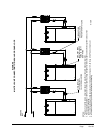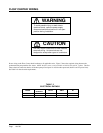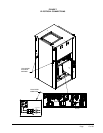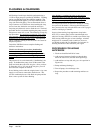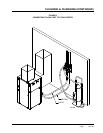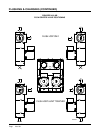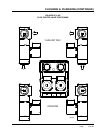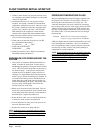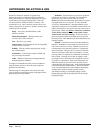
Manual 2100-518B
Page 28 of 30
Selection of antifreeze solutions for ground loop
applications requires consideration of many important
factors, which may have long-term implications in regards
to performance and system component life. Each area
of concern leads to a different antifreeze solution. The
fact that there is no “ideal” antifreeze and any choice will
require compromises in one area or another. Some of these
considering factors include:
Safety – The toxicity and ammability of the
antifreeze solution.
Thermal Performance – The heat transfer and
viscosity effects of the antifreeze.
Cost – The prices vary widely.
Corrosiveness – System materials must be compatible
with the antifreeze solution.
Stability – Will the solution require periodic change
out or maintenance?
Convenience – Is the solution readily available and
easy to transport and install?
Codes – Will the solution meet local/regional/state/
national regulatory standards?
It is highly recommended to utilize pre-mixed antifreeze
solutions where possible to alleviate many installation
problems and extra labor.
The following are some general observations about the
types of antifreeze materials presently being applied in the
geothermal ground loop markets:
Methanol – Considered toxic in pure form, good heat
transfer, low to mid-price, ammable in concentrations
greater than 25%, non-corrosive and low viscosity.
Methanol has delivered outstanding performance in ground
loop applications for over 20 years. Its only drawbacks
are toxicity and ammability. Although methanol enjoys
widespread consumer use as windshield washer uid in even
higher concentrations, some local codes may limit its use in
ground loops. (Note: Do NOT use automotive windshield
washer uid as antifreeze. Most washer uids contain
chemicals that will cause foaming.) To increase safety, a
pre-mixed form should be used on the jobsite to increase
the safety factor. Pure methanol can be purchased from any
chemical supplier.
Ethanol – Good heat transfer (lower than methanol),
high price, ammable in concentrations greater than 10%,
non-corrosive and low viscosity. Ethanol in pure form is
considered non-toxic and shows promise as a geothermal
heat transfer uid. However, the U.S. Bureau of Alcohol,
Tobacco & Firearms (ATF) limit its distribution. All non-
beverage ethanol is required to be denatured and rendered
unt to drink. Generally, this is done by adding a small
percentage of toxic substances such as methanol, benzene
or gasoline as a denaturant. Many of the denaturants are
difcult to identify by the casual user, and many are not
compatible with polyethylene pipe. Only denatured ethanol
can be purchased for commercial use. The use of ethanol
is not recommended because of the unknown denaturants
included in the solution and their possible toxicity
and damage resulting to polyethylene piping systems.
Denaturing agents that are petroleum based can damage
polyethylene pipe.
ANTIFREEZE SELECTION & USE



